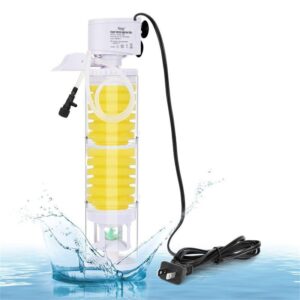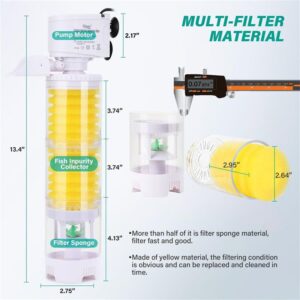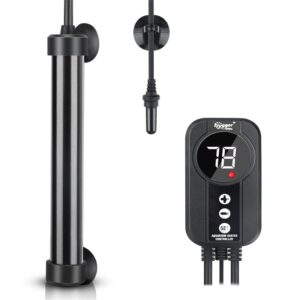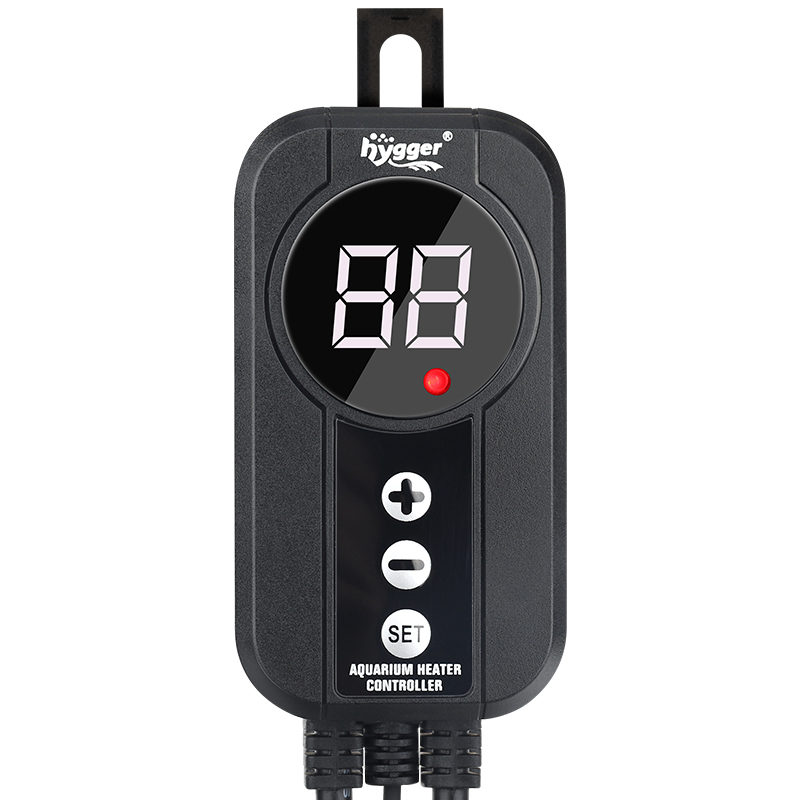Aquarium Plants That Thrive Without Light
A mesmerizing underwater world teeming with lush, vibrant aquatic plants. Maintaining a healthy aquatic ecosystem is an appealing idea to many people who like aquarium management. However, most people have the misconception that plants require a lot of light to thrive.
However, a startling array of aquarium plants defy popular assumptions and flourish in conditions with little to no light. We’ll dive into the world of plants that need no light in this book, learning about their special traits, ideal conditions, and minimal maintenance needs.
Does an Aquarium Plant Grow Without Light?
Light has a critical function in aquarium plant growth. Photosynthesis is primarily powered by light, which enables plants to transform light energy into chemical energy and feed themselves. But not every aquarium plant is made equally of how much light it needs. While some plants require substantial light exposure, there is a fascinating category of aquatic flora that can thrive with minimal to no light, plants that don’t need light in aquariums are mysterious.
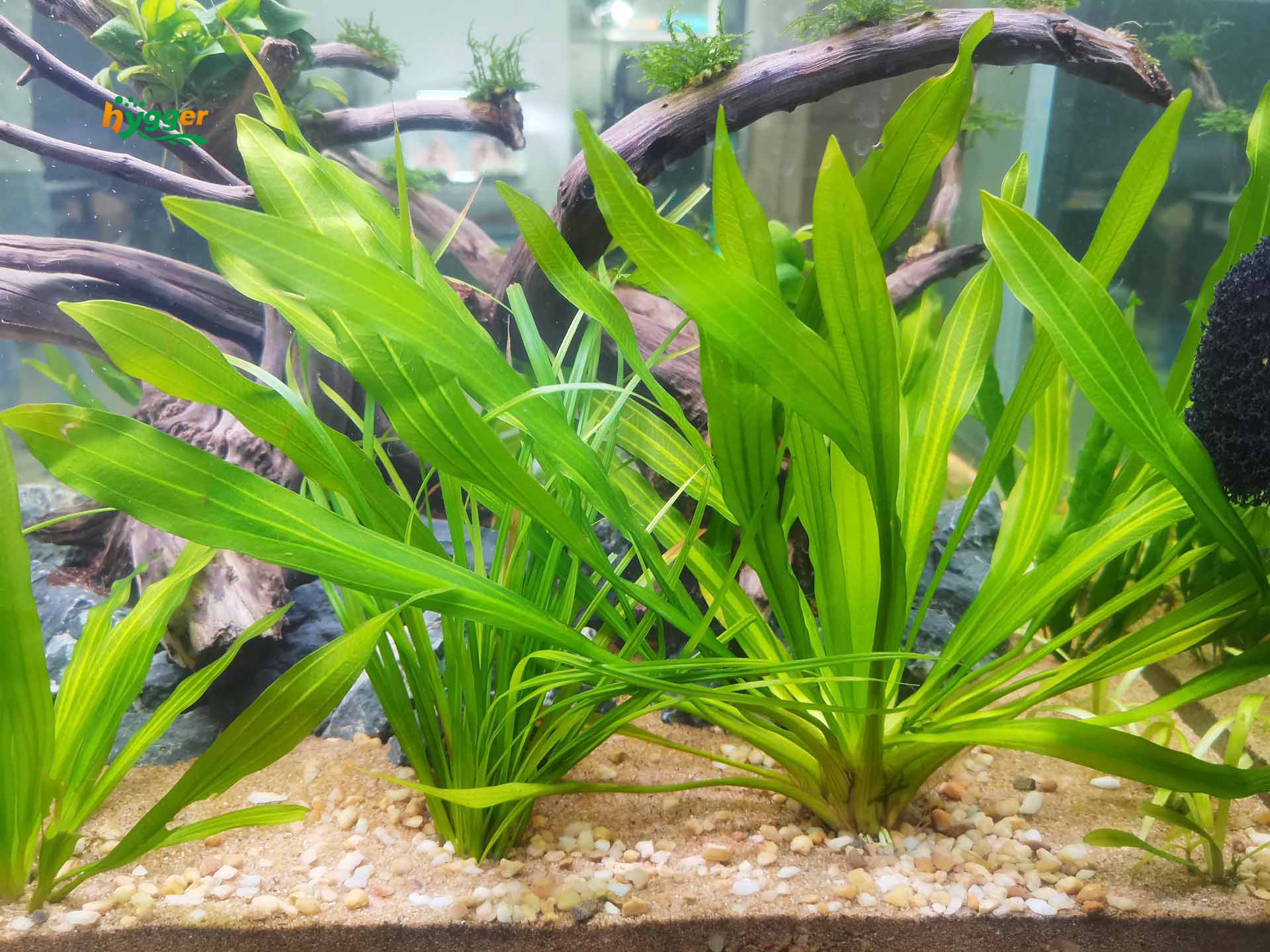
Top 10 Aquarium Plants That Need No Light
1.Java Moss (Taxiphyllum barbieri)
Distribution: Native to Southeast Asia.
Environmental Needs: Java Moss is versatile, adapting to various water conditions.
Growth Characteristics: Known for its robust nature, Java Moss can thrive in low-light environments and is an excellent addition to aquariums.
Tips: Some Java moss care tips
2. Anubias (Anubias spp.)
Distribution: Native to Africa.
Environmental Needs: Anubias prefers low to moderate light and can thrive in shaded areas.
Growth Characteristics: Slow-growing and sturdy, Anubias is an ideal choice for aquariums that limited light.
Tips: Solutions for the weird Anubias plant rot
3. Cryptocoryne (Cryptocoryne spp.)
Distribution: Found in Asia.
Environmental Needs: Cryptocoryne species are adaptable and can tolerate low-light conditions.
Growth Characteristics: Known for their attractive foliage, Cryptocorynes add a touch of elegance to aquariums with minimal light.
4. Java Fern (Microsorum pteropus)
Distribution: Native to Southeast Asia.
Environmental Needs: Thrives in low to moderate light.
Growth Characteristics: Java Ferns are hardy, with unique, intricate leaves that make them a popular choice for low-light aquariums.
5. Moss Balls (Marimo, Aegagropila linnaei)
Distribution: Native to lakes in Japan, Iceland, Scotland, and Estonia.
Environmental Needs: Moss balls require low to moderate light.
Growth Characteristics: These unique spherical algae formations add a quirky aesthetic to aquariums and require minimal care.
Tips: Marimo moss ball terrarium
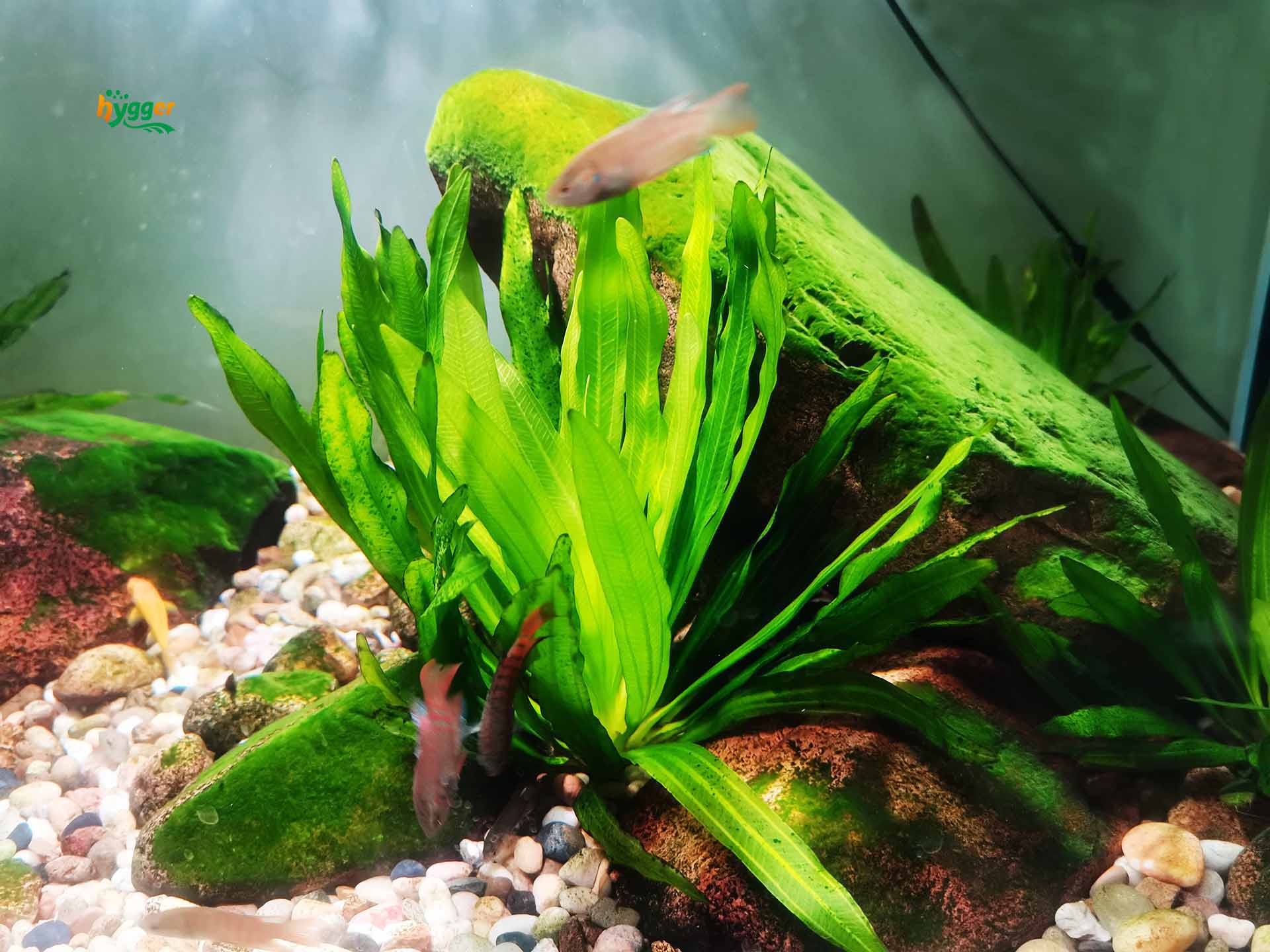
6. Hornwort (Ceratophyllum demersum)
Distribution: Widely distributed globally.
Environmental Needs: Hornwort is an adaptable plant that can thrive in low-light conditions.
Growth Characteristics: Rapid growth and excellent nutrient absorption make Hornwort an asset to low-light aquariums.
Tips: How to plant Hornwort
7. Swords (Echinodorus spp)
Distribution: Native to the Americas.
Environmental Needs: Swords prefer moderate light, but can tolerate lower light levels.
Growth Characteristics: With their broad, striking leaves, swords add a touch of drama to aquariums with limited or low light.
Tips: Caring for Amazon swords
8. Bucephalandra (Bucephalandra spp)
Distribution: Indigenous to Borneo.
Environmental Needs: Bucephalandra can adapt to low light conditions.
Growth Characteristics: Slow-growing and visually appealing, Bucephalandra is an excellent choice for low-light planted aquariums.
Tips: How to grow Bucephalandra emersed
9. Crypt Wendtii (Cryptocoryne wendtii)
Distribution: Native to Sri Lanka.
Environmental Needs: Crypt Wendtii can thrive in low to moderate light conditions.
Growth Characteristics: Known for its vibrant colors and diverse leaf shapes, adding visual interest to aquariums with minimal light.
10. Water Sprite (Ceratopteris thalictroides)
Distribution: Native to tropical regions worldwide.
Environmental Needs: Water Sprite can adapt to low-light conditions.
Growth Characteristics: With its delicate, feathery appearance, Water Sprite is a graceful addition to planted aquariums with minimal lights or no light.
Tips: Easier low-light aquarium plants for fish tanks
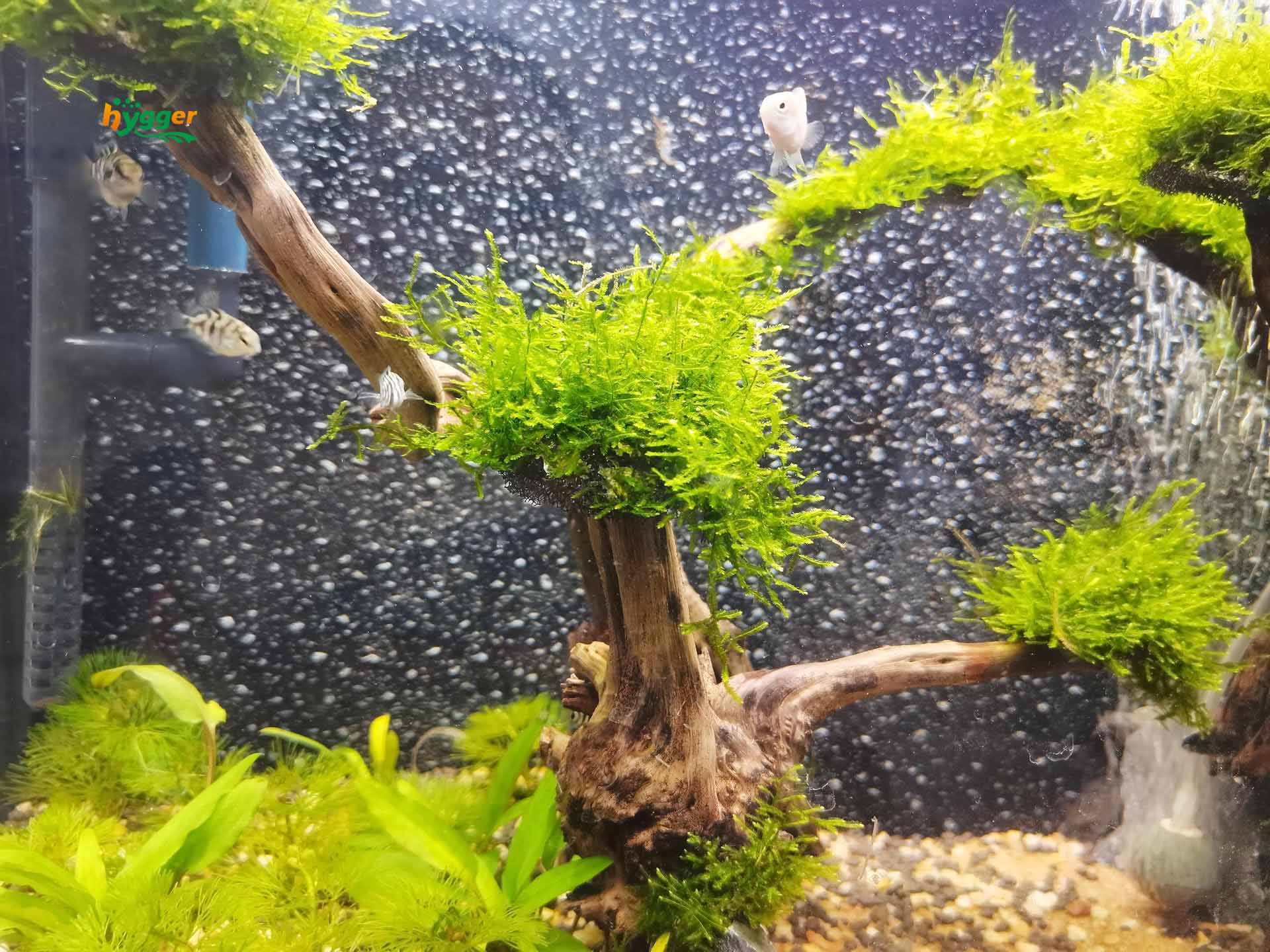
Minimal Care for Aquarium Plants That Don’t Need Light
Creating a healthy aquatic ecosystem does not have to be a time-consuming effort. There is an intriguing type of aquarium plant that requires very little care, particularly in terms of aquarium lighting. Let’s get some crucial advice for keeping your low-light aquatic plants happy and healthy.
Optimal Water Quality
Ensuring the right water parameters is crucial for the well-being of aquarium plants, even those that thrive in low-light conditions. Regularly monitor and maintain appropriate temperature, pH levels, and water hardness. Consistency in water quality fosters a stable environment for your plants to grow and prosper.
Strategic Substrate Selection
Choosing the right substrate is akin to providing a solid foundation for your aquatic garden. Opt for a nutrient-rich substrate that caters to the specific needs of your low-light plants. Additionally, consider incorporating root tabs into the substrate to provide essential minerals to support the plants’ overall health.
Moderate Feeding Practices
While low-light plants are generally less demanding in terms of nutrients, periodic feeding can bolster their growth. Use a balanced liquid fertilizer designed for aquarium use, and apply it in moderation. Over-fertilization can lead to algae issues, so strike a balance that complements the minimal needs of your chosen plant species.
Pruning and Maintenance Routine
Regular plant maintenance is a key component of keeping any aquarium healthy. For low-light plants, focus on pruning dead or decaying leaves and pick them out of the tank in time with the aquarium scissor kit. This not only enhances the aesthetic appeal of your underwater landscape but also prevents the buildup of organic matter, which can compromise water quality.
Strategic Lighting
Despite their well-known ability to tolerate low light or no light, some plants are not necessarily able to survive in total darkness. 6 to 8 hours a day of low to moderate light is a good starting point for a balanced lighting strategy. This ensures that your plants receive the energy they need for photosynthesis while preventing the onset of algae issues associated with prolonged exposure to light.
More tips about Light Settings for Aquarium Low-light Plants
Conclusion
Transforming your aquarium into a thriving aquatic oasis doesn’t necessarily require flooding it with light. The diverse array of plants discussed in this guide demonstrates that there are options available for aquarium enthusiasts who prefer or need low-light conditions.
By carefully selecting and caring for plants that need no light, you can create a visually appealing and balanced underwater ecosystem that requires minimal effort. So, embrace the world of aquarium plants that don’t need light, and let your underwater garden flourish in the subtle glow of nature’s beauty.

